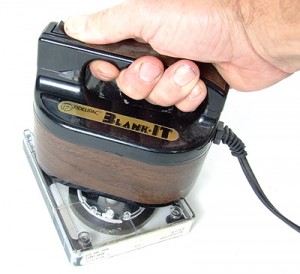
40 years ago, the Apollo 11 mission blasted off into space, making history as the first successful human landing on the moon. Unfortunately, NPR reports that after much searching, it looks like the best possible copies of the video that recorded this momentous event have long been erased:
Over the years, NASA had removed massive numbers of magnetic tapes from the shelves. In the early 1980s alone, tens of thousands of boxes were withdrawn.
It turns out that new satellites had gone up and were producing a lot of data that needed to be recorded. “These satellites were suddenly using tapes seven days a week, 24 hours a day,” says Lebar.
And the agency was experiencing a critical shortage of magnetic tapes. So NASA started erasing old ones and reusing them.
That’s probably what happened to the original footage from the moon that the astronauts captured with their lunar camera, says Lebar. It was stored on telemetry tapes, and old tapes with telemetry data were being recycled.
The article also explains how the specially-designed video cameras that astronauts took the moon produced videos of much higher quality than the snowy, blurry video American households saw that night, and we’ve seen for many years since. Regrettably, the Apollo video cameras used a non-standard format, requiring machinations on the ground to both store the content and convert it to more conventional means (and thus, introducing the noise and blur on currently available tapes).
And so, NASA becomes a poster child not only for the pitfalls of poor preservation planning, but the perils of using non-standard, proprietary formats to record important, historic moments!
